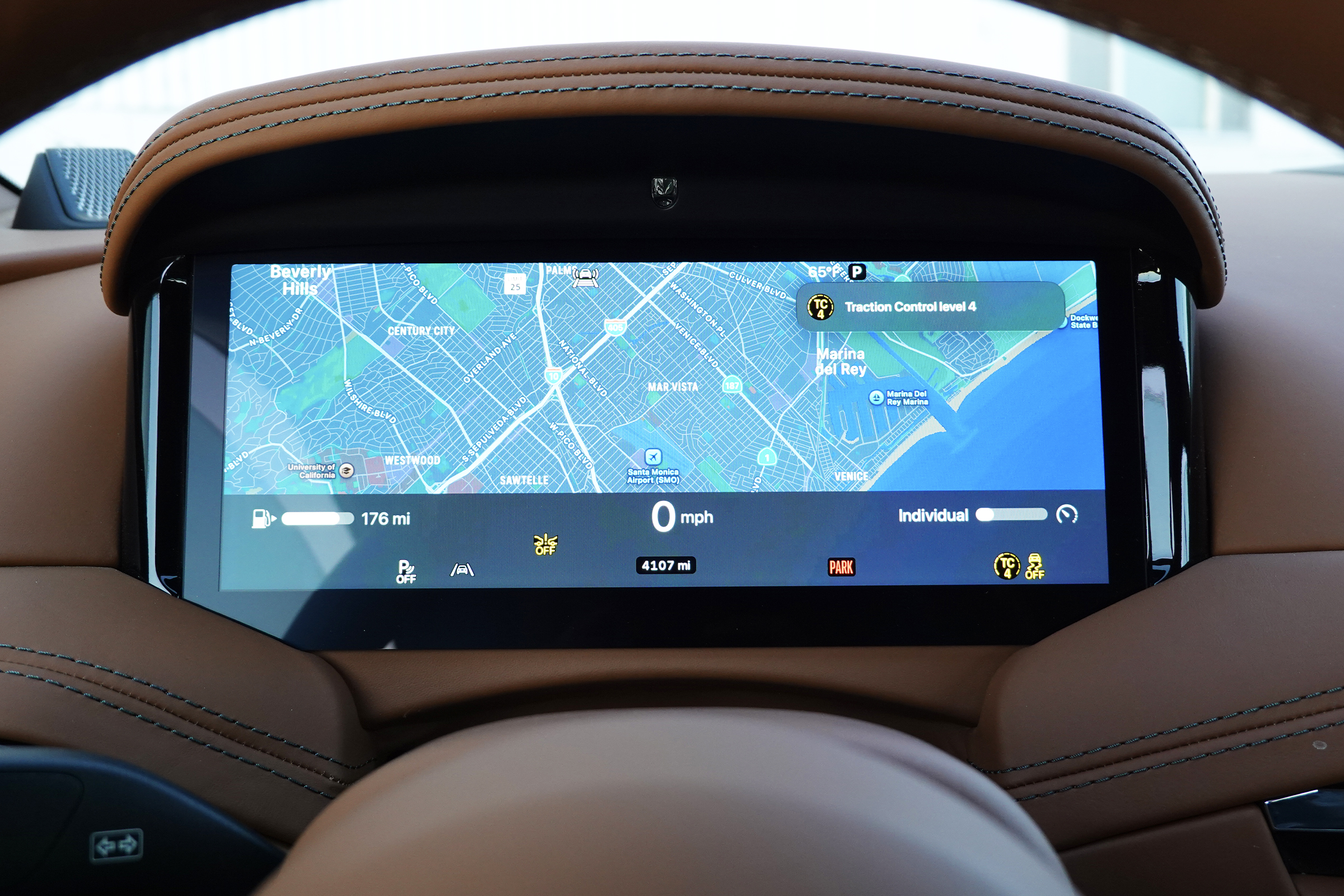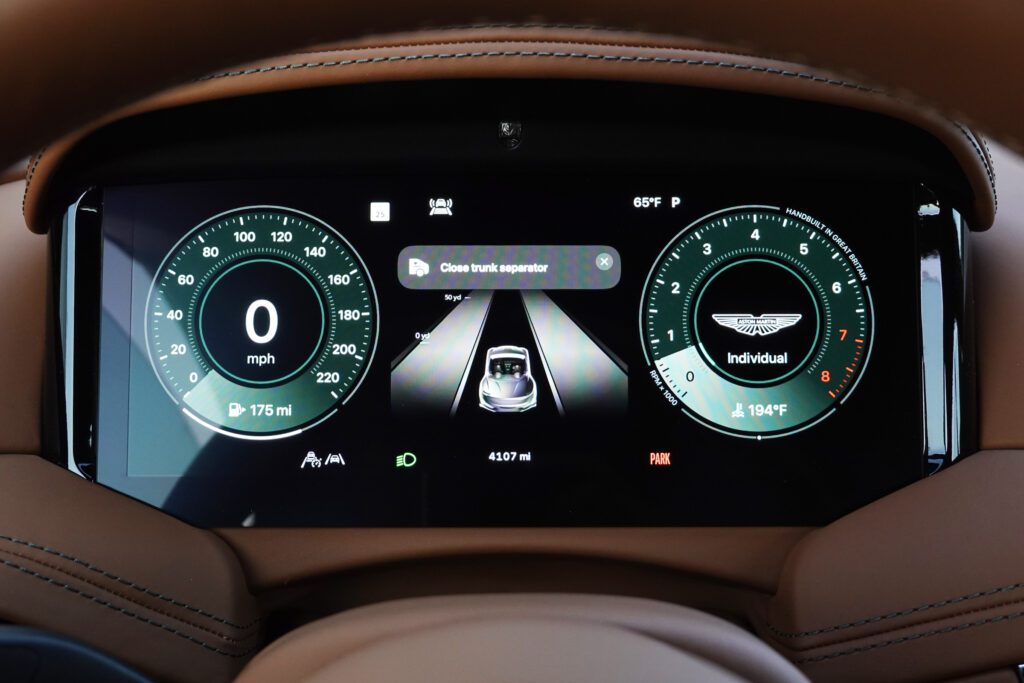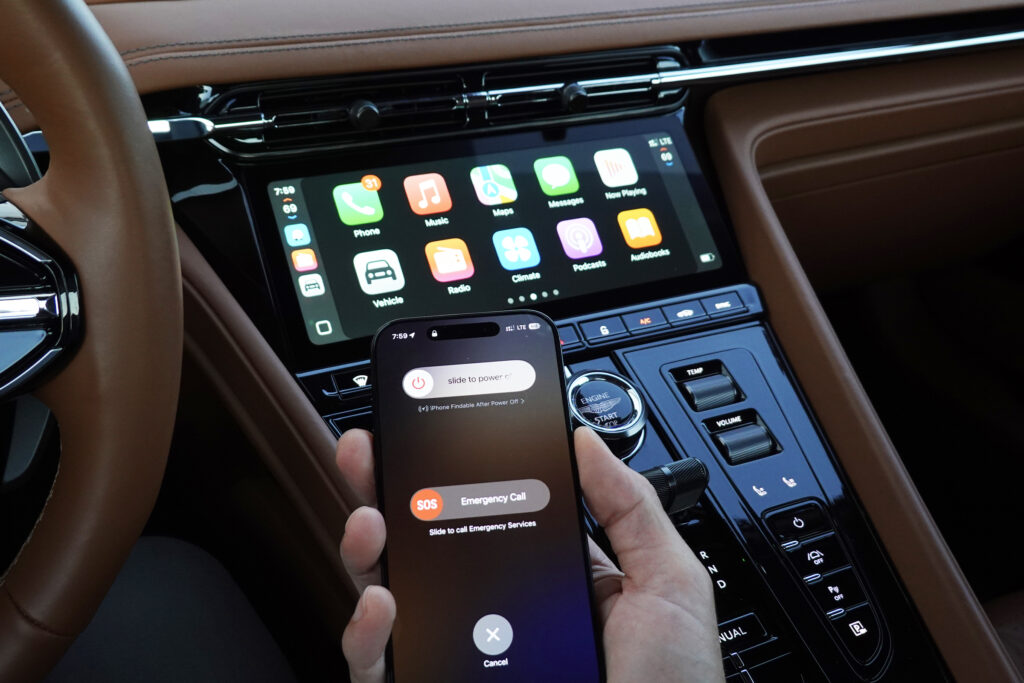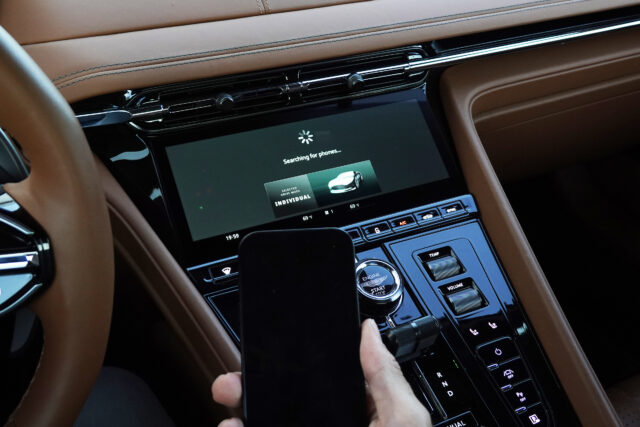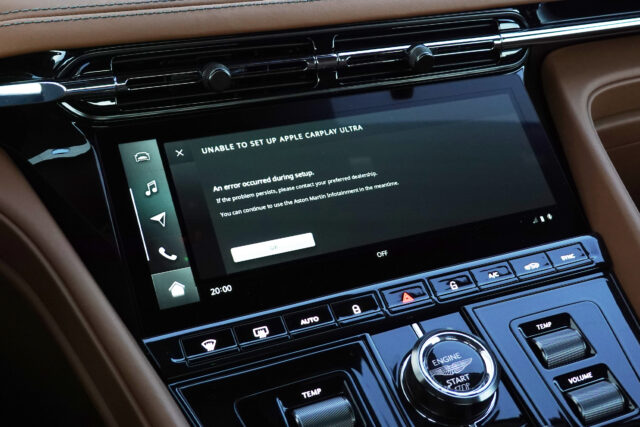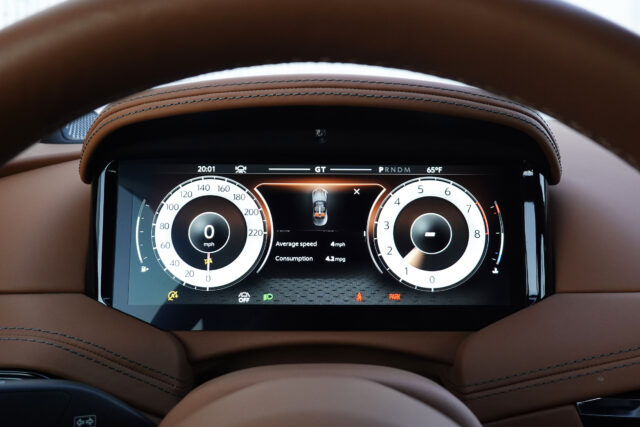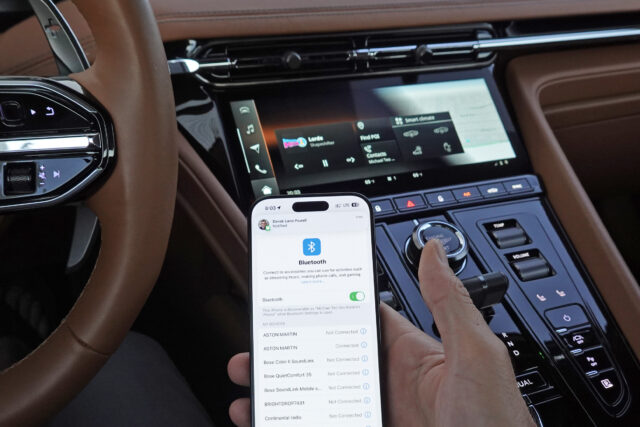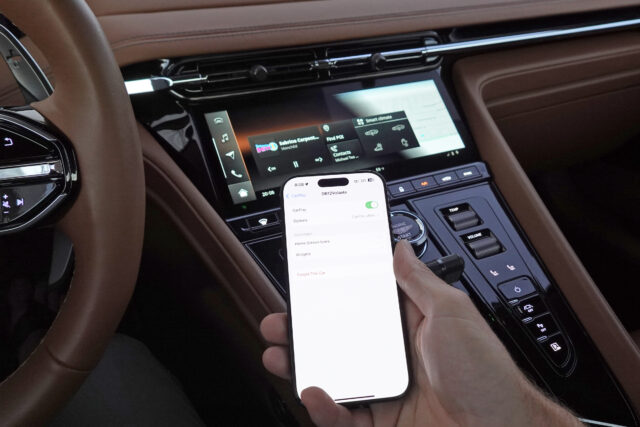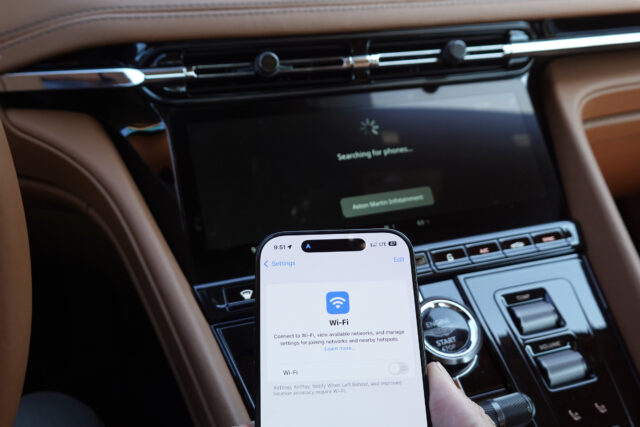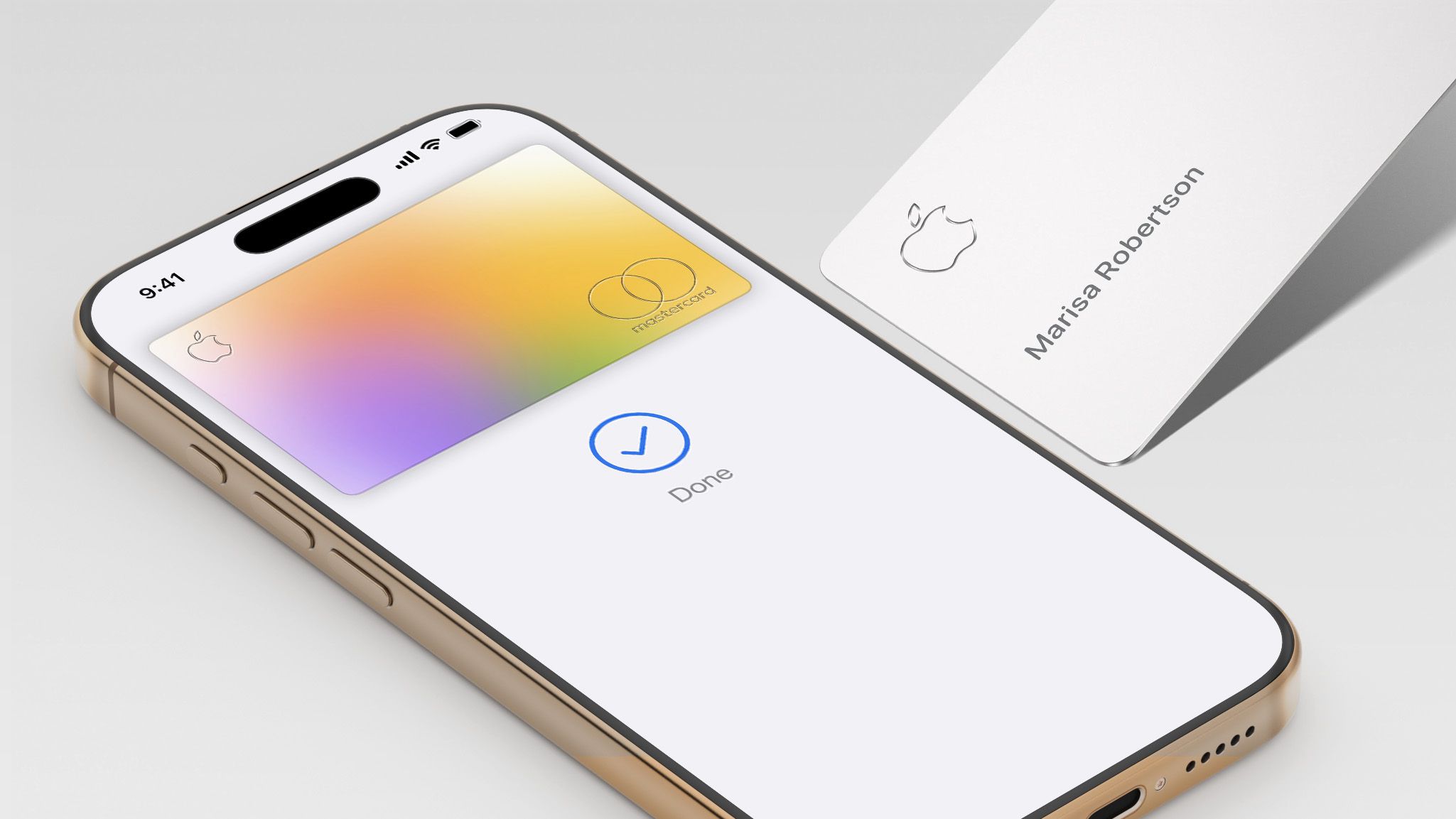Running around Los Angeles, I never found a spot with zero reception (I run e-sims, both Verizon and AT&T simultaneously, for this very reason), but I did purposefully enter airplane mode. This time, Ultra stayed active, and regardless, Apple assured me that essential functions, including navigation, can pre-load offline data for planned route guidance. But at the very worst, as with the phone turning off or battery dying, Ultra can simply revert to the onboard navigation.
Using Ultra regularly seemed to deplete my iPhone’s battery slightly more quickly than normal, and I noticed some warming of the iPhone—though without a controlled experiment, I can’t say with certainty whether these two symptoms happened quicker than simply running traditional CarPlay or Bluetooth. And in reality, most cars running Ultra (for Aston and beyond) should come equipped with wireless charge pads and plenty of USB-C ports anyhow to keep those batteries topped up. On hot summer days in LA, though, my iPhone seemed to get warmest while using inductive charging and Ultra simultaneously, to my admittedly unscientific touch.
Apple Maps is the only map that is allowed to go here in CarPlay Ultra.
Michael Teo Van Runkle
That’s a glitch.
Michael Teo Van Runkle
What happens if I turn this off?
Michael Teo Van Runkle
For commuters who brave traffic using Advanced Driver Assistance Systems (ADAS), Ultra seemed to work smoothly with the DB12’s lane departure warnings, steering corrections, and adaptive cruise control—though I typically turn all this off via Aston’s handy single button, which helps to stave off frustration. This introduces a loophole or gap in regulations, however, whether CarPlay Ultra needs to meet the ISO’s ASIL-D standards or achieve some kind of National Highway Traffic Safety Administration certification.
Traditional CarPlay stuck with infotainment and basic “phone” functions, but now that the iPhone essentially accesses and displays ADAS, drive modes, and traction setting information, where does regulated consumer safety come in? And where does liability rest, in the event of a driver aid or corrective maneuver going awry? Somehow, this question seems most likely to wind up on the desk of an insurance adjuster sooner rather than later.
Source link
